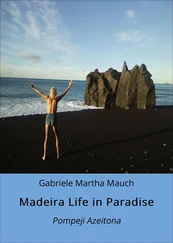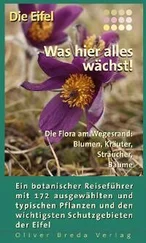Site:
The Popcorn Bush is often cultivated on Madeira; most easily you will find it in the south of the island up to an altitude of 450 m (490 yd.). You may also frequently discov-er the plant not only in the city of Funchal, but also in Caniço and in Caniço de Baixo.
Interesting to know:
The Popcorn Bush is native to tropical East Af-rica. It is often mixed up with the Candle Bush. Anyway, the latter has yellow buds; thus the en-tire inflorescence seems to be made of wax. This plant is not cultivated on Madeira. A noticeable characteristic of the Popcorn Bush is the slight-ly unpleasant smell that is exuded by the leaves or by buds when crumbling them. This smell re-minds of rancid peanut butter or old popcorn.
38
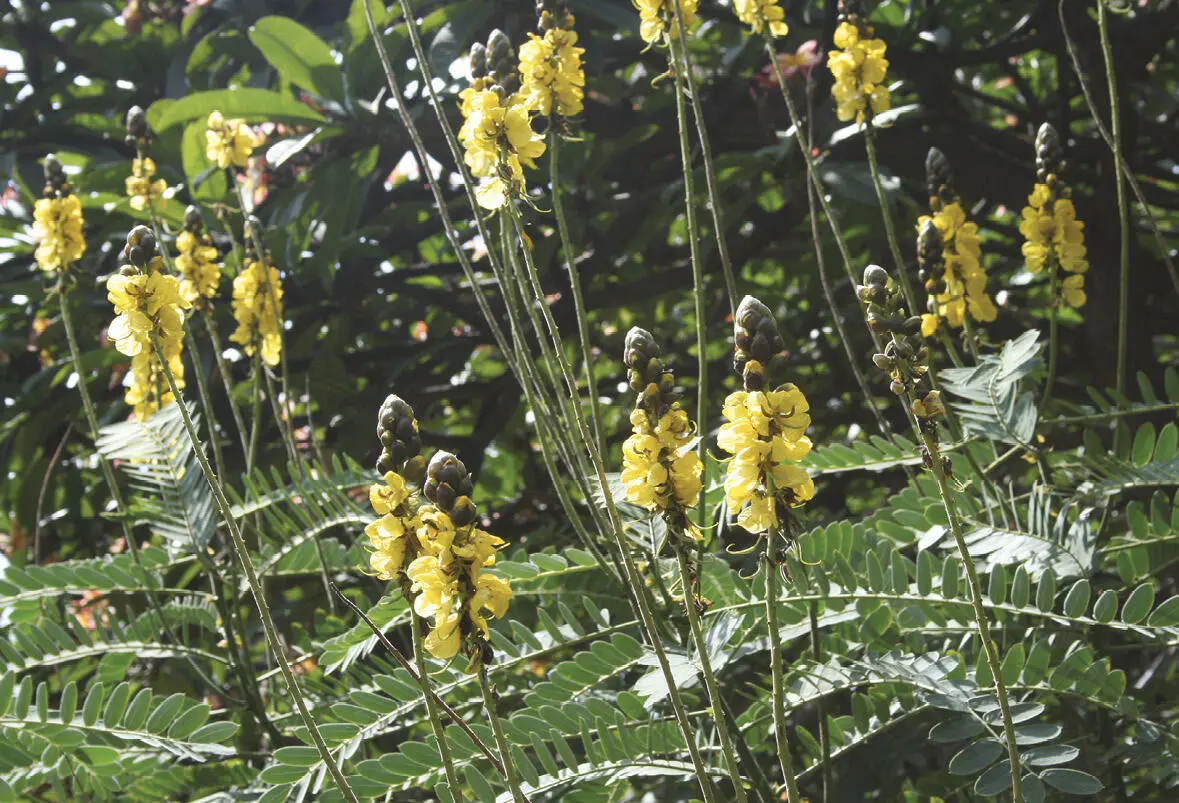


In the Gardens
Lobster Claw, Parrot’s Beak
Clianthus puniceus
Bloom time
From March to May.
Characteristics
The shrub with a height up to 2 m (6,6‘) is easily mixed up with smaller specimens of the related Cock’s Comb Coral Tree (cf. p. 25). Anyway, Lob-ster Claw’s clusters of orange flowers hang downwards. Single blossoms remind of parrots’ beaks. The leaves are finely pinnate, the twigs are conspicuously curved.
Site:
On Madeira, Lobster Claw prefers altitudes of 350-700 m (385-765 yd.); anyway it can also be found at coastal levels. It is quite frequently cultivated in gardens, parks and at roadsides - among others mainly in Funchal and Caniço.
Interesting to know:
Lobster Claw is native to New Zealand. For overgrazing of its habitats it is nearly extinct there and ranges among the most threatened plant species of the world. Fortunately it can easily be cultivated. Especially in England it is very popular as an ornamental plant for its dense inflorescence. It tolerates light frost and can thus be grown outdoors. Moreover it is to be found in greenhouses of botanical gar-dens or in many private vineyards in Central Europe. As a climbing plant it is popular for being grown in hanging baskets or at trellis-es. Apart from specimens with orange flow-ers you can find cultivars in pink and white.
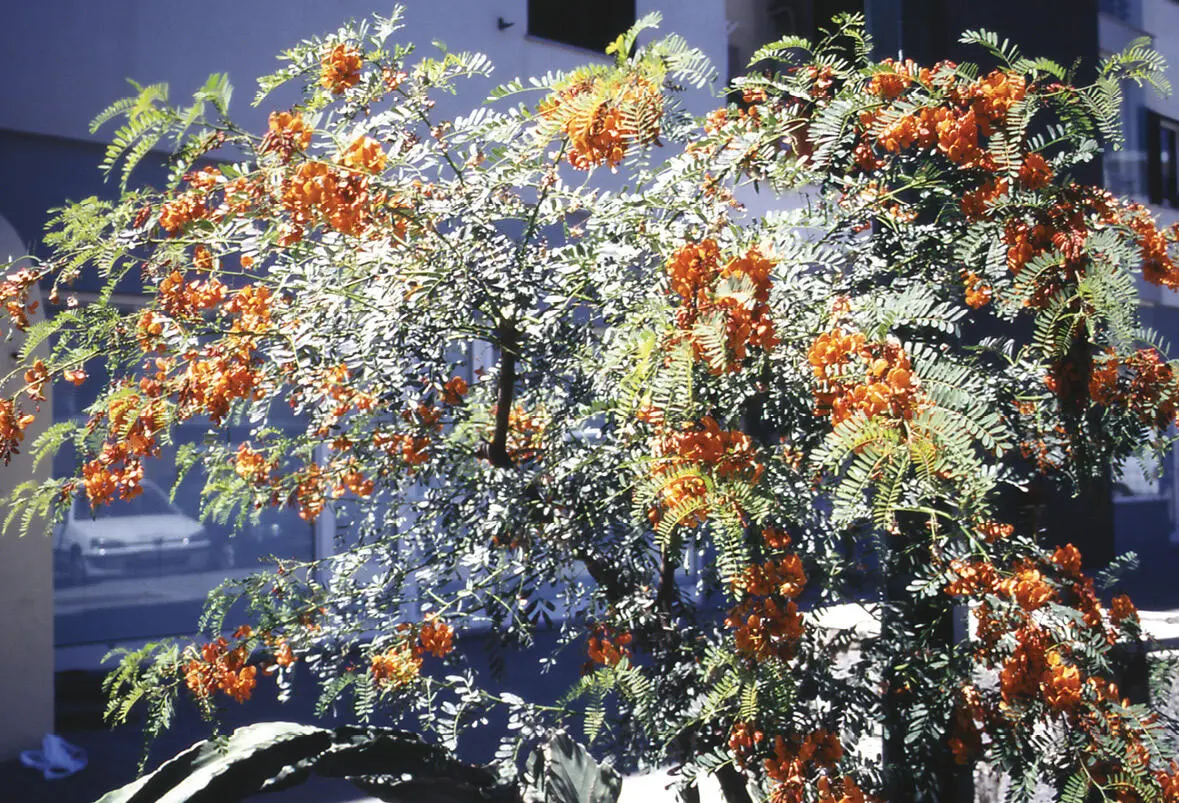
39


In the Gardens
Stiff Bottlebrush
Callistemon rigidus
Bloom time
From April to June.
Characteristics
The evergreen shrub grows 1-2 m (3,3-6,6‘) tall. Its leathery leaves emerge from the twigs like beaters. They remind of a conifer’s needles and scent aromatically when crumbling them. Stamens stick out from every single blossom; thus the shining red flower clus-ters resemble bottlebrushes.
Site:
On Madeira the Stiff Bottlebrush grows in coast-al areas. In the south it reaches up to an altitude of 450 m (490 yd.). Single specimens are deco-rating various parks and gardens. Among others you can find it in the Parque Santa Catarina ( 198) or close to the volcanic cave in São Vicente.
Interesting to know:
The Stiff Bottlebrush is native to Southeast Australia and adapted to frequent bush fires. The leaves contain ethereal oils and catch fire that fast that the oxygen is removed from the flame; the twigs hardly do not suffer any damage. The seeds stay with the plant for sev-eral years in cone-like groups. They only open and sprout after having been exposed to fire. As they grow among the ashes of a burnt off vegetation they scarcely have any rivals. The similar Weeping Bottlebrush is also cultivat-ed on Madeira. Its leaves are softer; the twigs hang down like those of a Weeping Willow.
40
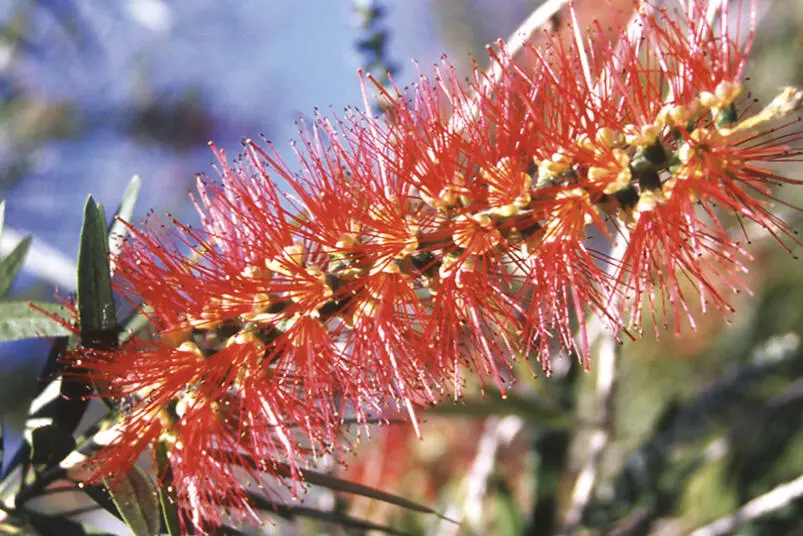
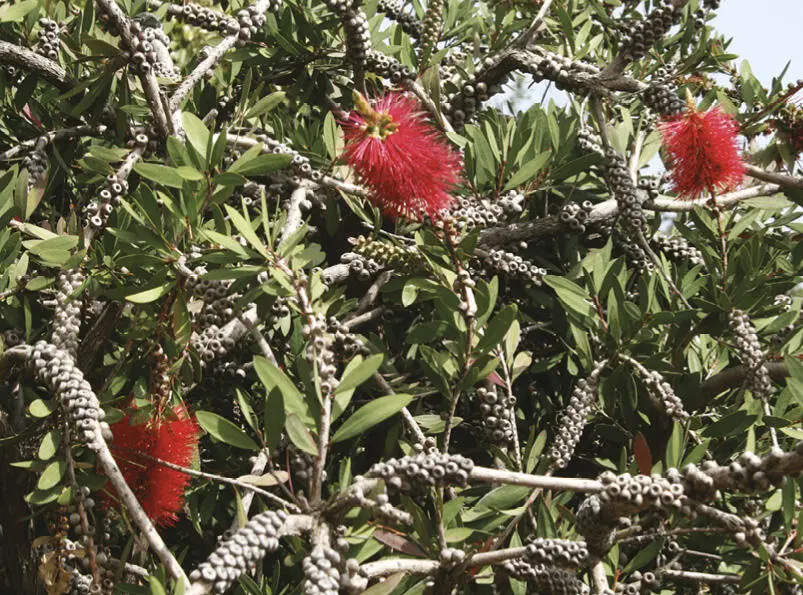


In the Gardens
King Protea, Cape Artichoke Flower
Protea cynaroides
Bloom time:
From April to June.
Characteristics:
The plant grows 1-1,5 m (3,3 – 5’) tall. The leathery, spatula-shaped leaves are slightly crinkled and shine silvery. The calyces resemble artichokes or thistles. The outer bracts are coloured from violet to pink, the colour of the inner, tubular blooms ranges from a pale violet through green to silver.
Site:
In the Palheiro Gardens you will find King Proteas growing in two groups. Further protea species with blooms of different colours can be explored as well. Single specimens are to be found in the garden of the Quinta of Prazeres or close to the Quinta do Furão. At some places close to Camacha at an altitude of 400-700 m (440-765 yd.) or in the region above Calheta, proteas are cultivated for commercial purposes.
Interesting to know:
In the 20th century Mildred Blandy direct-ed Blandy’s Garden (currently known as the Palheiro Gardens) for five decades. She introduced Proteas to Madeira. She had raised in South Africa and thus felt a spe-cial affection for the flora of her motherland. After already being very fashionable in the 19th century, Proteas were rediscovered as cut flowers in the last years. Having been dried they stay attractive for several months.
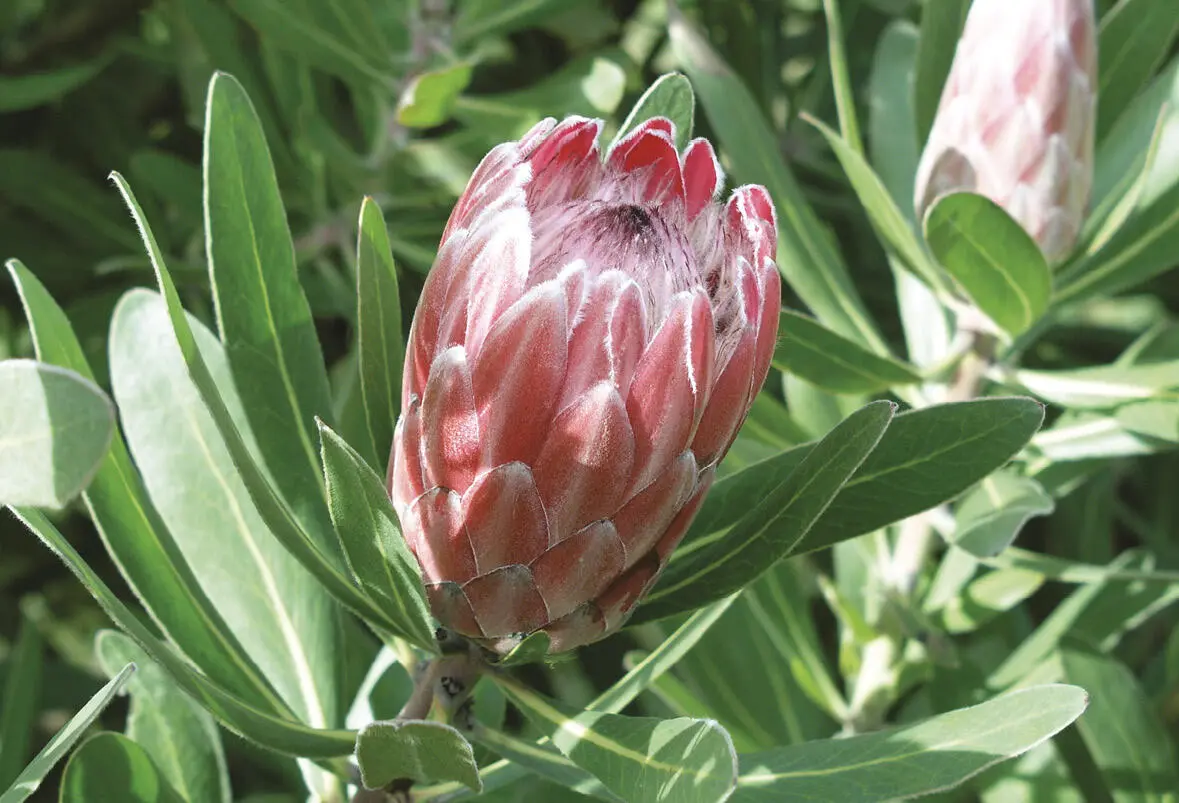
41


In the Gardens
Lesser Bougainvillea
Bougainvillea glabra
Bloom time
All year round, mainly in early summer.
Characteristics
The thorny climbing plant grows up to 25 m (28 yd.) tall on (building) walls. The leaves don’t carry hairs. The actual blooms are yellowish and very small. Shining, purple red, oval-tapered bracts surround each three of them. There are cultivars with varying colours.
Site:
For aesthetic purposes, canalized riverbeds in Funchal and Santa Cruz are covered with wires on which are growing Bougainvillea plants. They also grow on other sites and are among the most popular ornamental plants on Madei-ra for their abundance of flowers. Up to an altitude of 450 m (490 yd.) and especially in the south you can find them nearly everywhere.
Читать дальше















